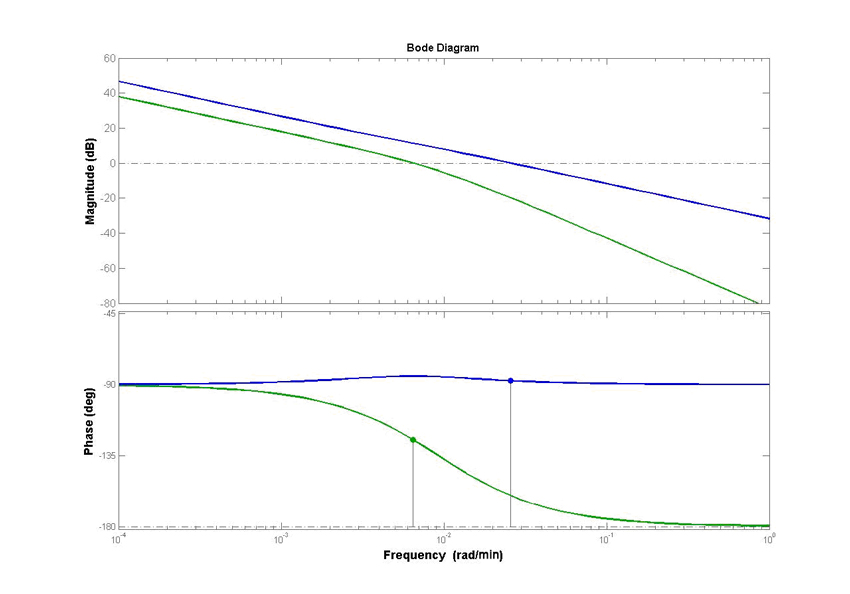Team:IIT Bombay India/CAM
From 2009.igem.org
(Difference between revisions)
Pranayiitb (Talk | contribs) |
Pranayiitb (Talk | contribs) |
||
| Line 22: | Line 22: | ||
|} | |} | ||
| - | {| background-color:#ffffff;" cellpadding=" | + | {| background-color:#ffffff;" cellpadding="1" cellspacing="2" border="0" bordercolor="#ffffff" width="90%" align="center" |
!align="left"| | !align="left"| | ||
| + | | | ||
| + | Control Theory Approach to Study Multiple Feedbacks in Lac-operon system | ||
| - | + | '''Objectives''' | |
| + | |||
| + | 1. Characterize the system. | ||
| + | 2. Linearize the system around a set-point on LacI. | ||
| + | 3. Obtain a linear model in transfer-function (s) domain. | ||
| + | 4. Frequency response analysis using magnitude and phase bode plots. | ||
| + | 5. Sensitivity analysis using magnitude bode plot for sensitivity function. | ||
| + | 6. Steps 2-5 for 1000μM IPTG. | ||
| + | 7. Add external noise in the system and tried to determine the reduction in the noise for the system with multiple feedbacks and open-loop system. | ||
| + | |||
| + | |||
| + | '''Methodology''' | ||
| + | |||
| + | We have 2 control levels. By combination, we have 4 different control loops or structures possible, expressed in 4 different strains. They are as follows:- | ||
| + | |||
| + | '''Strain 1 (Open loop) with plasmid (BBa_K255004)''' | ||
| + | It has got open loop without any feedback.re there is constitutive expression of LacI. | ||
| + | |||
| + | '''Strain 2(Single Input Single Output with regulation on LacI [SISO_LacI] with plasmid (BBa_K255003))''' | ||
| + | It has got a single negative feedback loop. So the expression of LacI is under regulation. Here also the copy number of the plasmid is fixed. | ||
| + | ''' | ||
| + | Strain 3(Single Input Single Output with regulation on copy number [SISO_CN] with plasmid (BBa_K255002))''' | ||
| + | It has got a single negative feedback loop on the feedback copy number. Here there is no control on the LacI expression. | ||
| + | ''' | ||
| + | Strain 4 (Multiple Input Multiple Output with regulation on copy number and LacI [MIMO] with plasmid (BBa_K255001))''' | ||
| + | |||
| + | It has dual negative feedback loop one on the plasmid copy number and second on the LacI expression. | ||
| + | |||
| + | |||
| + | The dynamic model for the system could be represented as given below: | ||
| + | |||
| + | [[Image:shetty1.jpg]] | ||
| + | |||
| + | We linearize the system around a set-point on LacI and try to obtain a linear equation model around the setpoint. This enables us to separate the controllers from the system of equations. The controllers are designed as proportional-integral (PI) controllers. The process and controller parameters for the system were tuned in a manner as to obtain steady state and dynamic characteristics that closely match with experimental data. The utility of the multiple feedbacks was analysed using the frequency response tools of control systems’ theory using functions in MATLAB 7.8. We use bode plots to obtain the frequency response analysis for the multiple feedback and single feedback system. Further, we do frequency response analysis for high IPTG concentrations. | ||
| + | |||
| + | The linearized system in transfer-function (s) domain is as given below: | ||
| + | |||
| + | [[Image:shetty2.jpg]] | ||
| + | |||
| + | We add external noise in the system using random noise block in SIMULINK in each of the differential equation blocks individually or together and compare the normalized standard deviations in steady-state LacI production for system with multiple feedbacks and open-loop system. The noise was given in relation to the steady-state value of copy number or LacI values such that standard deviation/steady-state value is constant for open loop and multiple-feedback systems.. With this we try to see whether external noise is attenuated in the system with multiple feedbacks. | ||
| + | |||
| + | '''Results''' | ||
| + | |||
| + | The magnitude and phase bode plots for the system is given below: | ||
| + | |||
| + | [[Image:shetty2.jpg]] | ||
| + | [[Image:shetty2.jpg]] | ||
| + | '' | ||
| + | Fig: Magnitude, phase and sensitivity bode plots for LacI system given in linear model. The green line represents CFS with only C1(s), while blue line represents DFS with both C1(s) and C2(s). The gain margin for both CFS and DFS is ∞. The phase margin is 92.2o for DFS and 56o for CFS. The increased bandwidth from 0.00428 rad/min to 0.0255 rad/min indicates faster response and improved noise rejection. The CFS has higher peak of 2.92 dB while DFS has no peak, again indicating better noise-attentuation.'' | ||
| + | |||
| + | |||
| + | 1. The phase margin for a distributed, multiple feedback system (DFS) is 92.2o, while it is 56ofor a single, conventional feedback system (CFS). | ||
| + | |||
| + | 2. The bandwidth increases from 0.00428 rad/min to 0.0255 rad/min for CFS to DFS. | ||
| + | For system with IPTG concentration of 1000μM, | ||
| - | |||
| - | |||
| - | |||
| | | | ||
|} | |} | ||
Revision as of 20:44, 21 October 2009
| Home | The Team | The Project | Analysis | Modeling | Notebook | Safety |
|---|
Control Analysis Model |
 "
"


